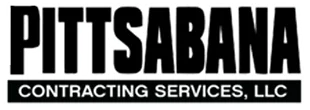As winter approaches, homeowners start to think about keeping their homes warm and cozy. One important part of a heating system is the chimney. But how does a chimney work, and what factors affect its performance? In this post, we’ll explore the anatomy of a chimney, the stack effect, and the primary factors that affect chimney draft. We’ll also discuss the impact of a chimney on the life of your roof.
How Does a Chimney Work?
A chimney is a vertical structure that channels smoke and combustion gases from a fireplace, stove, or furnace to the outside. It works by creating a draft, which is a flow of air that moves from an area of high pressure to an area of low pressure. The draft pulls the smoke and gases out of the building and up the chimney.
The Stack Effect
The stack effect is a natural phenomenon that contributes to the draft in a chimney. It occurs when warm air rises and escapes through any openings in the upper part of a building, such as windows, vents, and chimneys. This creates a low-pressure zone at the bottom of the building, which draws in cooler air through any openings in the lower part of the building, such as doors and windows. The stack effect helps to create the draft in a chimney by pulling air up and out of the building.
Anatomy of a Chimney
A chimney consists of several parts, each of which plays a crucial role in its operation. The main parts are:
Flue – The flue is the interior part of the chimney that channels the smoke and gases to the outside.
Chimney cap – The chimney cap is the top of the chimney that prevents rain, snow, and debris from entering.
Chimney crown – The chimney crown is the topmost part of the chimney that seals the flue and protects the brickwork from water damage.
Chimney liner – The chimney liner is the protective layer inside the flue that prevents the buildup of creosote and other combustible materials.
Smoke chamber – The smoke chamber is the area above the fireplace where the smoke and gases accumulate before being drawn up the flue.
Primary Factors that Affect Chimney Draft
Several factors can affect the performance of a chimney, including:
Temperature: A warm chimney creates a stronger draft because warm air rises faster than cool air.
Height: A taller chimney creates a stronger draft because it has more height to create a pressure difference.
Wind: Wind can either help or hinder the draft in a chimney, depending on its direction and speed.
Blockages: Blockages in the flue, such as creosote buildup, can reduce the draft by restricting the flow of air.
Impact of a Chimney on the Life of Your Roof
A chimney can have a significant impact on the life of your roof. If the chimney is not properly sealed, it can allow water to penetrate the roof and cause damage to the underlying structure. Additionally, if the chimney is not properly maintained, it can deteriorate and become a safety hazard.
In conclusion, a chimney plays an important role in a heating system, and understanding how it works and what factors affect its performance is crucial for maintaining a safe and efficient home. By following proper maintenance practices, such as regular cleaning and inspections, you can ensure that your chimney continues to operate effectively and does not negatively impact the life of your roof. If you’re in the market for new roofing in Allegheny County, PA, turn to Pittsabana Contracting Services LLC Roofing Contractor in Ross Township, PA This local roofing company employs team members who are certified by CertainTeed and committed to delivering premium service on every job, from repairing storm-damaged commercial buildings to fully replacing residential roofs. Call (412) 580-6567 to speak with a friendly staff member to schedule service or visit the website to learn more about how they’ll help you.



